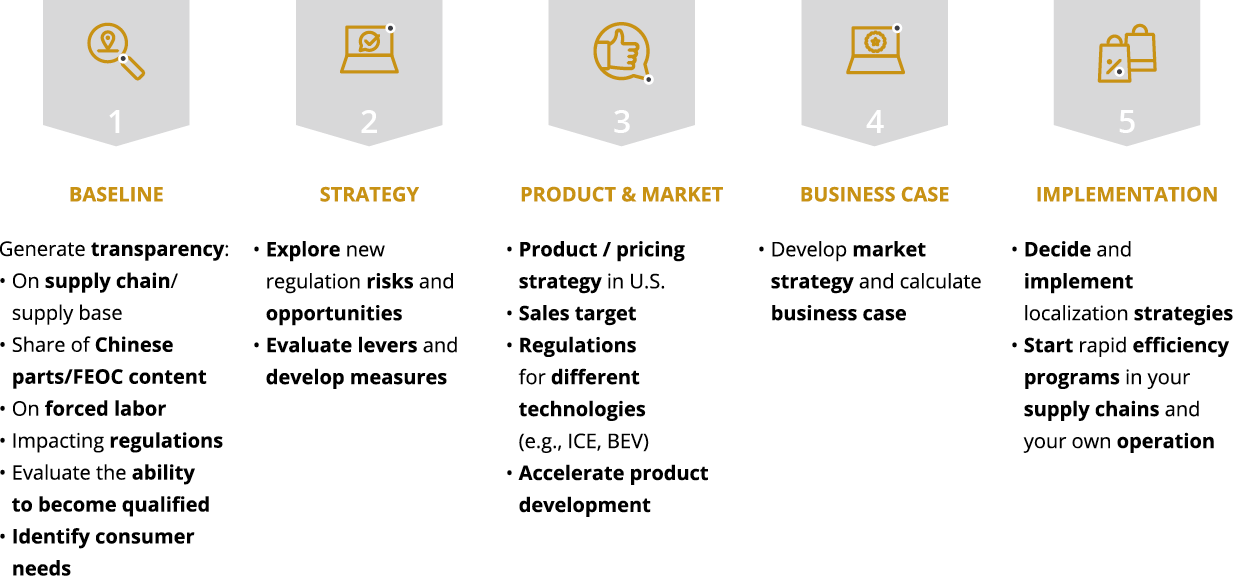These policies – if enacted – present challenges for both U.S. and foreign automakers, who rely heavily on cross-border supply chains with Canada and Mexico. Additionally, while the U.S. is a key automotive market (16 million annual vehicle sales), automakers and especially auto suppliers face the fact that growth in EV market shares is behind OEM projections while capital has been and will continue to be deployed to enable that structural shift. Protectionist measures and voter volatility further complicate long-term planning, as the political landscape could change in as little as two years. To succeed in this uncertain landscape, automakers and suppliers must address key priorities:
Speed
Winning requires breaking the industry’s slow pace. Capital deployment, production ramp-up, and ROI cycles must accelerate. Faster execution will separate those who adapt to market demands from those left behind.
Cost Competitiveness
Protectionism is not a shield. Global competitors will find ways into the U.S. market, whether through localized production or cost-efficient operations. Automakers must lower costs across the value chain—modular manufacturing, supply chain efficiency, and innovative practices are non-negotiable.
Modularity and Scalability
Designing modular platforms for development, production, and supply chains will enable flexibility. Those who can adapt to local and global demands quickly while maintaining scale will outpace competitors.
Quality and Customer Focus
Despite external challenges, customers demand quality and value. Automakers must deliver superior products and seamless ownership experiences to win loyalty and sustain their market position.
Path Forward
Automakers and suppliers must balance immediate U.S. policy impacts with global mobility trends. Adaptability is critical: embracing speed, cost efficiency, modularity, and customer satisfaction will be the foundation for resilience. Success lies not in reacting to short-term disruptions but in building flexible, forward-looking strategies.
In this volatile environment, those who act decisively and innovate will win.
How can automakers navigate the regulatory changes of U.S. auto policy under the Trump administration while balancing global mega-trends and ensuring long-term resilience?




